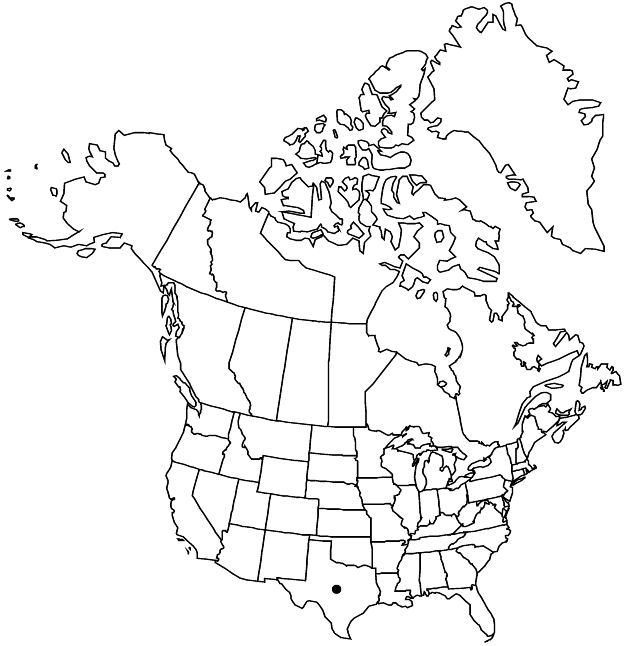Acalypha poiretii
Syst. Veg. 3: 879. 1826.
Herbs, annual, 1–4 dm, monoecious. Stems erect, pubescent and sparsely hirsute. Leaves: petiole 1–4.5 cm; blade ovate to elliptic, 2–5 × 1–3.5 cm, base obtuse to rounded, margins serrate-crenate, apex acute. Inflorescences bisexual, axillary; peduncle 0.1–0.5 cm, pistillate portion 2–4 × 0.8–1.2 cm (shorter on proximal inflorescences), staminate portion 0.3–1 cm; allomorphic pistillate flowers common, terminal on staminate portion of inflorescences. Pistillate bracts (normal flowers) crowded (inflorescence axis not visible between bracts), 4–5 × 6–8 mm, abaxial surface pubescent and sparsely stipitate-glandular; lobes 7–9, triangular, 1/5 bract length; of allomorphic flowers absent. Pedicels of allomorphic flowers rudimentary. Pistillate flowers: pistil 3-carpellate (normal flowers), 1-carpellate (allomorphic flowers); styles unbranched. Capsules smooth, pubescent; allomorphic fruits obovoid, 1.2–1.5 × 1–1.2 mm, muricate, pubescent. Seeds 1.2–1.5 mm, minutely pitted.
Phenology: Flowering and fruiting late summer–fall.
Habitat: Disturbed areas.
Elevation: 10–100 m.
Distribution

Tex., c, e Mexico, Central America (Guatemala), West Indies, South America, Africa
Discussion
Acalypha poiretii is known in the flora area from the lower Rio Grande valley (Cameron, Hidalgo, and Starr counties). It was collected in the late nineteenth century on ballast dumps in Alabama, Florida, and New Jersey, but has not been reported again from any of these states.
Some authors (for example, R. Govaerts et al. 2000) have treated Acalypha poiretii and A. alnifolia Poiret as synonyms, in which case the latter would be the correct name for this species; however, the types of the two names clearly belong to different species.
Selected References
None.
Lower Taxa
"elongated" is not a number."connate" is not a number. "distinct" is not a number.